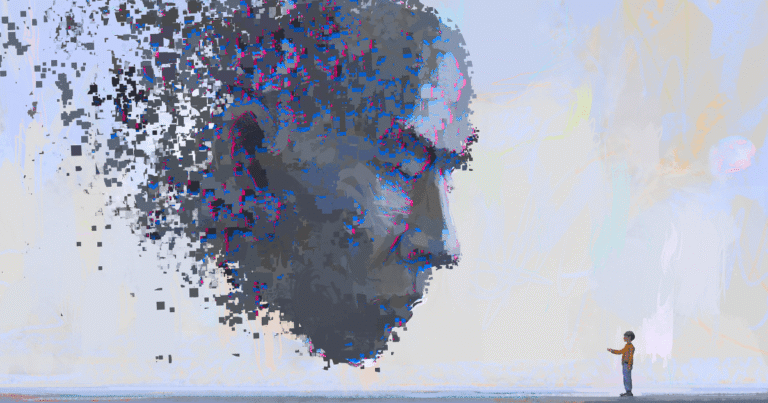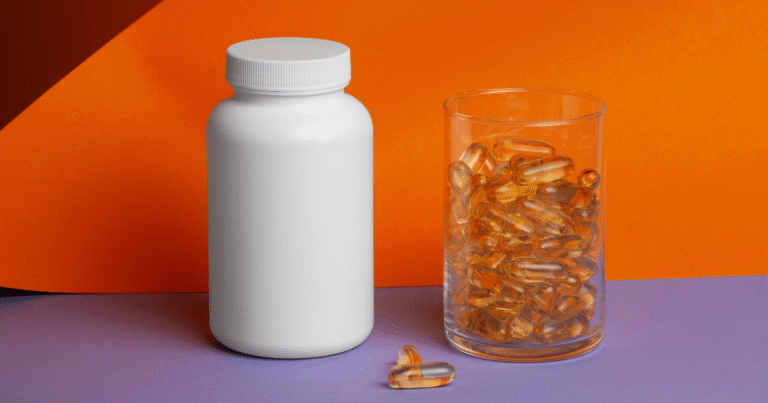Understanding Your Anxiety: GAD vs. Social Anxiety – A Complete Comparison Guide
When anxiety takes over your life, understanding exactly what you’re dealing with can be the difference between effective treatment and years of struggling with the wrong approach.
The question of GAD vs. Social Anxiety is more than academic—it’s deeply personal and practical. While both conditions involve overwhelming worry and can significantly impact your daily life, they require different understanding, different coping strategies, and often different treatments.
This comprehensive guide breaks down the key differences and similarities between Generalized Anxiety Disorder (GAD) and Social Anxiety Disorder (SAD), helping you understand which condition might be affecting you or a loved one, and what to do about it.
The Fundamental Difference: Where Your Worry Lives
The Core Distinction in GAD vs. Social Anxiety
Generalized Anxiety Disorder (GAD): The Scattered Spotlight
- Worry spreads across multiple life domains
- Anxiety jumps from topic to topic throughout the day
- Concerns often involve “what if” scenarios about future events
- Worry feels uncontrollable and excessive relative to actual circumstances
Social Anxiety Disorder (SAD): The Focused Laser
- Anxiety centers specifically on social evaluation and judgment
- Fear is triggered by social or performance situations
- Primary concern is how others perceive, judge, or reject you
- Worry intensifies before and during social interactions
Think of it this way: Someone with GAD might worry about their health, their job security, their family’s safety, the economy, and world events all in the same day. Someone with social anxiety might feel completely calm about their health and finances but experience panic at the thought of attending a work meeting or social gathering.
Deep Dive: Generalized Anxiety Disorder (GAD)
What GAD Really Feels Like
The internal experience of GAD:
- A constant sense that something bad is about to happen
- Difficulty “turning off” worried thoughts
- Mental exhaustion from constant vigilance
- Feeling like you’re always waiting for the other shoe to drop
- Difficulty enjoying positive moments due to worry about the future
The “worry chain” phenomenon: GAD often involves chains of worry where one concern leads to another: “What if I lose my job?” → “Then I couldn’t pay my mortgage” → “Then I’d lose my house” → “Then my family would suffer” → “Then I’d be a complete failure”
Comprehensive GAD Symptoms
Cognitive (Mental) Symptoms
- Excessive worry about everyday situations and events
- Catastrophic thinking – always imagining worst-case scenarios
- Difficulty concentrating due to racing, worried thoughts
- Indecisiveness – overthinking every choice, no matter how small
- Mental fatigue from constant worry and rumination
- Hypervigilance – constantly scanning for potential threats or problems
Physical Symptoms
- Muscle tension – particularly in neck, shoulders, and jaw
- Fatigue despite not engaging in physically demanding activities
- Restlessness – feeling “keyed up” or unable to relax
- Sleep disturbances – difficulty falling asleep, staying asleep, or restless sleep
- Digestive issues – stomach problems, nausea, diarrhea
- Headaches – often tension-type headaches
- Trembling or feeling shaky
- Being easily startled
Behavioral Symptoms
- Avoidance of activities that might trigger worry
- Seeking excessive reassurance from others
- Procrastination due to worry about outcomes
- Checking behaviors – repeatedly verifying that things are okay
- Over-preparation for events to try to control outcomes
Common GAD Worry Themes
Health concerns:
- Worrying about developing serious illnesses
- Excessive concern about family members’ health
- Overthinking minor physical symptoms
- Fear of medical procedures or doctor visits
Financial security:
- Constant worry about money, even when finances are stable
- Fear of job loss or economic downturns
- Excessive concern about retirement or future financial needs
- Worry about unexpected expenses
Relationships:
- Constant concern about loved ones’ safety and well-being
- Worry about relationship conflicts or endings
- Fear that something bad will happen to family members
- Excessive concern about children’s success and happiness
Work and performance:
- Worry about job performance and security
- Concern about meeting deadlines and expectations
- Fear of making mistakes or disappointing others
- Excessive worry about career progression
World events:
- Worry about natural disasters, crime, or political instability
- Excessive concern about events beyond personal control
- Fear about the future of society or the environment
GAD in Daily Life: Real Examples
Morning routine: “Did I turn off the stove? What if there’s a gas leak? What if I’m late to work? What if my boss thinks I’m unreliable?”
At work: “What if this project doesn’t meet expectations? What if I get fired? How would we pay the bills? What if my kids can’t go to college?”
Evening: “Why hasn’t my spouse texted back? What if something happened? What if they’re upset with me? What if we’re growing apart?”
Deep Dive: Social Anxiety Disorder (SAD)
What Social Anxiety Really Feels Like
The internal experience of social anxiety:
- Intense self-consciousness and feeling “on display”
- Constant monitoring of others’ reactions and expressions
- Fear that anxiety symptoms (blushing, sweating, trembling) are visible
- Exhaustion from “performing” normalcy in social situations
- Relief when social interactions end and you can be alone
The judgment fear: The core of social anxiety is an intense fear of negative evaluation: “They’ll think I’m boring/awkward/stupid/weird” “Everyone will notice I’m nervous” “They’ll reject me if they see who I really am”
Comprehensive Social Anxiety Symptoms
Cognitive (Mental) Symptoms
- Fear of judgment – intense worry about being evaluated negatively
- Mind reading – assuming you know what others are thinking about you
- Catastrophic predictions – imagining the worst possible social outcomes
- Post-event processing – replaying social interactions and finding “mistakes”
- Self-focused attention – excessive awareness of your own behavior and appearance
- Perfectionist thinking – believing you must be flawless to be accepted
Physical Symptoms
- Blushing or flushing – particularly distressing because it’s visible
- Sweating – especially facial sweating or sweaty palms
- Trembling – hands, voice, or entire body
- Rapid heartbeat – palpitations during social interactions
- Nausea or stomach butterflies
- Dizziness or lightheadedness
- Muscle tension – rigid posture or clenched jaw
- Voice changes – speaking too quietly, voice shaking, or losing words
Behavioral Symptoms
- Avoidance – declining social invitations or opportunities
- Safety behaviors – strategies to reduce anxiety (avoiding eye contact, staying near exits)
- Social withdrawal – isolating from friends, family, or colleagues
- Performance checking – constantly monitoring your social performance
- Escape behaviors – leaving social situations early when anxiety peaks
Common Social Anxiety Triggers
Social interaction situations:
- Meeting new people or making introductions
- Having conversations with acquaintances or colleagues
- Attending parties, gatherings, or social events
- Dating or romantic interactions
- Making phone calls or video calls
Performance situations:
- Public speaking or giving presentations
- Being the center of attention (birthdays, celebrations)
- Eating or drinking in front of others
- Writing or working while being observed
- Participating in meetings or group discussions
Everyday social situations:
- Shopping or interacting with service workers
- Using public restrooms when others are present
- Walking into rooms where people are already seated
- Being introduced to groups of people
- Small talk with neighbors or acquaintances
Social Anxiety in Daily Life: Real Examples
Before a work meeting: “What if I say something stupid? What if everyone notices I’m sweating? What if they ask me a question I can’t answer?”
At a party: “I don’t know what to say to anyone. They all seem so comfortable. I bet they think I’m weird for standing alone. I should probably leave.”
After social interaction: “I can’t believe I said that awkward thing. They definitely think I’m strange. I’m never going to another work happy hour.”
Detailed Comparison: GAD vs. Social Anxiety
Trigger Patterns
| Aspect | GAD | Social Anxiety |
|---|---|---|
| Primary triggers | Multiple life domains, often unclear | Specific social/performance situations |
| Trigger predictability | Often unpredictable, can happen anytime | Highly predictable (social events, interactions) |
| Trigger specificity | Broad, constantly shifting | Specific, consistent social themes |
| Recovery pattern | Worry continues even when alone | Significant relief when social situation ends |
Worry Content and Patterns
| Feature | GAD | Social Anxiety |
|---|---|---|
| Worry topics | Health, finances, relationships, work, world events | Being judged, embarrassed, rejected, or humiliated |
| Worry timeline | Past mistakes, current problems, future catastrophes | Upcoming social events, recent social interactions |
| Worry scope | Wide-ranging, jumps between topics | Narrow focus on social evaluation and performance |
| Worry persistence | Constant background worry | Episodic, tied to social exposure |
Physical Symptom Patterns
| Symptoms | GAD | Social Anxiety |
|---|---|---|
| Muscle tension | Chronic, generalized | Acute, situation-specific |
| Fatigue | Persistent from constant worry | After social interactions (“social hangover”) |
| Sleep issues | Chronic insomnia from racing thoughts | Sleep problems before social events |
| Digestive problems | Ongoing stomach issues | Nausea/butterflies before social situations |
| Visible symptoms | Less concerned about others noticing | Highly distressed by visible symptoms (blushing, sweating) |
Avoidance Behaviors
GAD avoidance patterns:
- Avoiding making important decisions
- Procrastinating on tasks that might have uncertain outcomes
- Avoiding news or information that might trigger worry
- Over-preparing or over-researching to reduce uncertainty
- Seeking excessive reassurance from others
Social anxiety avoidance patterns:
- Declining social invitations and opportunities
- Avoiding speaking up in meetings or classes
- Choosing careers or activities that minimize social interaction
- Using alcohol or substances to cope with social situations
- Bringing “safety people” to social events
Impact on Relationships
GAD relationship impacts:
- Partners may feel burdened by constant reassurance-seeking
- Difficulty enjoying time together due to persistent worry
- May avoid social activities due to general anxiety
- Worry about relationship itself becomes another source of anxiety
Social anxiety relationship impacts:
- Difficulty forming new relationships due to social fears
- May rely heavily on one or two close relationships
- Romantic relationships affected by dating anxiety
- May appear aloof or disinterested when actually anxious
When GAD and Social Anxiety Coexist
The Overlap: Having Both Conditions
Statistics: Research shows that 30-40% of people with GAD also have social anxiety disorder, and vice versa.
Why they often occur together:
- Shared genetic and biological risk factors
- Similar cognitive patterns (catastrophic thinking, worry)
- One condition can trigger or worsen the other
- Both involve fear of negative outcomes and uncertainty
What Comorbid GAD and Social Anxiety Looks Like
Example scenarios:
- Worrying about health issues (GAD) but being too anxious to call the doctor (social anxiety)
- Financial concerns (GAD) combined with inability to network professionally (social anxiety)
- Worry about children’s wellbeing (GAD) but anxiety about talking to teachers (social anxiety)
- General worry about life direction (GAD) plus fear of asking for help or advice (social anxiety)
Compounding effects:
- Social isolation worsens both conditions
- Avoidance becomes more complex and pervasive
- Treatment needs to address both worry patterns
- Recovery may take longer but is absolutely possible
Diagnostic Considerations: GAD vs. Social Anxiety
Key Diagnostic Questions
To distinguish GAD:
- Do you worry about many different things throughout the day?
- Is your anxiety present even when you’re alone?
- Do you find it difficult to control your worrying?
- Are you concerned about things even when there’s no immediate threat?
- Does your worry jump from topic to topic?
To distinguish Social Anxiety:
- Do your anxiety symptoms primarily occur in social situations?
- Are you most worried about what others think of you?
- Do you feel relief when you’re alone or with very close friends/family?
- Are you afraid of being embarrassed or humiliated?
- Do you avoid social situations specifically because of fear of judgment?
For potential comorbidity:
- Do you experience both social fears AND general life worries?
- Does worry about one area prevent you from taking social action?
- Are you anxious in social situations AND about many other life areas?
- Do you avoid social situations partly due to general worry and partly due to social fear?
Professional Assessment
What mental health professionals evaluate:
- Duration and persistence of symptoms (both require 6+ months)
- Severity and functional impairment
- Specific triggers and patterns
- Family history and developmental factors
- Previous treatment responses
- Co-occurring conditions (depression, other anxiety disorders)
Treatment Approaches: GAD vs. Social Anxiety
Evidence-Based Treatments for GAD
Cognitive Behavioral Therapy (CBT) for GAD:
- Worry exposure and worry time techniques
- Challenging catastrophic thinking patterns
- Problem-solving training for realistic concerns
- Relaxation training and mindfulness
- Acceptance-based approaches for uncertainty
Medications for GAD:
- SSRIs (sertraline, escitalopram, paroxetine)
- SNRIs (venlafaxine, duloxetine)
- Buspirone (anti-anxiety medication)
- Sometimes benzodiazepines for short-term relief
Evidence-Based Treatments for Social Anxiety
CBT for Social Anxiety:
- Cognitive restructuring for social fears
- Gradual exposure to social situations
- Social skills training when appropriate
- Video feedback and behavioral experiments
- Group therapy for real-world practice
Medications for Social Anxiety:
- SSRIs (particularly paroxetine, which is FDA-approved for social anxiety)
- SNRIs (venlafaxine)
- Beta-blockers for performance anxiety
- Sometimes anti-anxiety medications for specific situations
Treatment for Comorbid Conditions
When both GAD and social anxiety are present:
- Integrated CBT addressing both worry patterns and social fears
- Comprehensive approach rather than treating conditions separately
- May require longer treatment duration
- Group therapy can be particularly beneficial
- Medication management may be more complex
Self-Assessment Tools
GAD Self-Assessment Questions
Rate each item on a scale of 0-3 (0=not at all, 3=nearly every day):
- Feeling nervous, anxious, or on edge
- Not being able to stop or control worrying
- Worrying too much about different things
- Trouble relaxing
- Being so restless that it’s hard to sit still
- Becoming easily annoyed or irritable
- Feeling afraid as if something awful might happen
Score interpretation:
- 0-4: Minimal anxiety
- 5-9: Mild anxiety
- 10-14: Moderate anxiety
- 15-21: Severe anxiety
Social Anxiety Self-Assessment Questions
Consider how much you fear and avoid these situations:
- Talking to people in authority
- Acting, performing, or giving a talk in front of an audience
- Going to a party
- Working while being observed
- Entering a room when others are already seated
- Being the center of attention
- Speaking up at a meeting
- Taking a test
- Expressing a disagreement or disapproval to people you don’t know very well
- Looking at people you don’t know very well in the eyes
Patterns to notice:
- High scores suggest possible social anxiety disorder
- Consistent avoidance across social situations indicates generalized social anxiety
- Specific fears (like public speaking only) might indicate performance-type social anxiety
Living Well with GAD or Social Anxiety
Self-Care Strategies for GAD
Daily practices:
- Scheduled “worry time” to contain anxious thoughts
- Mindfulness meditation to stay present
- Regular exercise to reduce overall anxiety levels
- Journaling to externalize and examine worries
- Progressive muscle relaxation for physical tension
Lifestyle approaches:
- Limit news and social media consumption
- Create routines and predictability where possible
- Practice good sleep hygiene
- Maintain social connections for support
- Challenge yourself to tolerate some uncertainty
Self-Care Strategies for Social Anxiety
Gradual exposure:
- Start with small, manageable social interactions
- Build confidence through successful experiences
- Practice social skills in low-pressure environments
- Challenge negative predictions through behavioral experiments
Mindfulness and grounding:
- Focus on others rather than self-monitoring
- Use breathing techniques during social situations
- Practice self-compassion for social “mistakes”
- Ground yourself in the present moment during interactions
Universal Strategies for Both Conditions
Professional support:
- Work with therapists who understand anxiety disorders
- Consider group therapy for additional support and practice
- Explore medication options with psychiatrists when appropriate
- Regular check-ins to monitor progress and adjust treatment
Lifestyle factors:
- Regular exercise (proven to reduce anxiety)
- Adequate sleep (7-9 hours nightly)
- Balanced nutrition (stable blood sugar helps mood)
- Limit caffeine and alcohol
- Build and maintain supportive relationships
When to Seek Professional Help
Red Flags for Both Conditions
Seek immediate professional help if:
- Anxiety significantly interferes with work, school, or relationships
- You’re avoiding important life activities due to anxiety
- You’re using alcohol or substances to cope with anxiety
- You’re having thoughts of self-harm
- Physical symptoms are impacting your health
- Anxiety has persisted for several months without improvement
Finding the Right Professional
Look for mental health providers who:
- Have experience with anxiety disorders
- Use evidence-based treatments (CBT, exposure therapy)
- Can provide accurate diagnosis of GAD vs. social anxiety
- Understand the potential for comorbid conditions
- Offer both individual and group therapy options
Hope and Recovery
The Reality of Treatment Success
Both GAD and social anxiety are highly treatable:
- 60-80% of people see significant improvement with proper treatment
- Most people notice some improvement within 8-12 weeks of starting treatment
- Many people go on to live full, satisfying lives while managing their anxiety
- Early intervention leads to better outcomes
What Recovery Looks Like
For GAD:
- Worry becomes more manageable and less frequent
- Ability to tolerate uncertainty increases
- Physical symptoms of anxiety decrease
- Overall quality of life and functioning improve
- Ability to enjoy positive experiences returns
For Social Anxiety:
- Increased comfort in social situations
- Reduced avoidance of social opportunities
- Improved ability to form and maintain relationships
- Decreased fear of judgment and rejection
- Greater authenticity in social interactions
Building Your Support System
Creating a network for recovery:
- Mental health professionals who understand your specific condition
- Family and friends who support your treatment journey
- Support groups (online or in-person) with others who understand
- Online communities and resources for ongoing learning and support
Moving Forward: Your Next Steps
Understanding GAD vs. Social Anxiety is the first step toward getting the right help and building the life you want. Whether you’re dealing with the scattered worry of GAD, the focused fear of social anxiety, or the complex combination of both, effective treatment is available.
Remember:
- Accurate diagnosis leads to more effective treatment
- Both conditions are real, valid, and treatable
- You don’t have to suffer in silence or figure this out alone
- Professional help can make a dramatic difference in your quality of life
- Recovery is possible, and you deserve to feel better
Your next step: If you recognize yourself in either of these descriptions, consider reaching out to a mental health professional who can provide proper assessment and treatment. Your courage in seeking understanding and help is the first step toward the calmer, more confident life that’s waiting for you.
The journey from anxiety to peace is possible—and it starts with understanding exactly what you’re dealing with.







